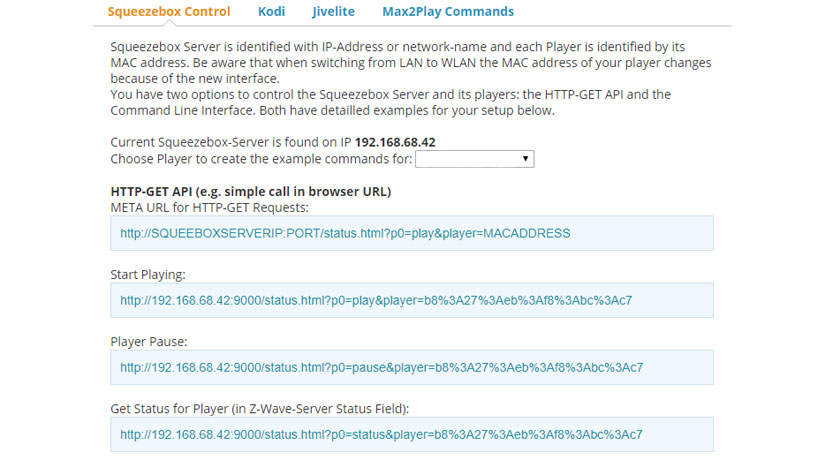Jivelite For Mac
Topic -Dynobot 19:11:07 10/12/18 (47). Feanor 12:02:53 10/29/18 (0). Dynobot 19:19:18 10/14/18 (32). andyc 14:49:11 10/17/18 (0). G Squared 13:41:57 10/16/18 (0). Chris from Lafayette 23:58:49 10/14/18 (1).
I didn't know that about AV+, HQ Player, VLC. AbeCollins 07:46:02 10/15/18 (0).
Kal Rubinson 20:18:06 10/14/18 (24). Dynobot 20:29:51 10/14/18 (23). Mike B.

10:51:48 10/15/18 (20). fmak 13:10:35 10/23/18 (18). Dynobot 17:27:12 10/23/18 (0).
Mike B. 15:14:32 10/23/18 (16). fmak 08:36:00 10/24/18 (15). Mike B.
Once upon a time there was an awesome audio device called the Squeezebox Touch from Logitech. The Touch was loved by audiophiles for its touch screen interface and great DAC. Paired with LogitechMediaServer which you can sync with other players giving you a whole house audio experience. That is one thing that many media player did not implement very well.the ability to sync perfect playback across multiple devices.
Anyway in a world where nobody cares about sound anymore and the main method of delivery for music is a telephone with a pair of designer headphones the Touch didn't stand much of a chance of being a commercial success. The good news is that when Logitech ditched their device line of Squeezeboxes they made their media server Open Source and the community ran with it and made it a great little project for lots of platforms and especially for the Raspberry Pi. To make things even cooler a project called sprung up which turns a Linux computer with a touch screen into a Squeezebox Touch.
I made a couple of them and started my documentation process. To date it has been my most 'successful' web page and it was essentially installing Jivelite the 'hard way'. But because it is Open Source now others have taken the project to the next level. One such implementation is. I've tried PiCorePlayer in the past and as a genuine Linux geek I always poo-poo'd it because it was too easy. However try installing Jivelite on a Raspberry Pi with one USB port sometime. Anyway I was helping someone work through my Jivelite web page on their installation and the guy working through it pointed out some information that was no longer relevant as some repositories have been archived and some links moved which in turn caused him to seek some assistance.
I found the newer repositories, fixed my web page and got a passing interest back in Jivelite again. In fact I had a Raspberry Pi 3 with a Raspberry Pi Official Touch Screen that wasn't doing anything so I thought I'd put Jivelite on it and make another audio player. (Yeah, like I need another audio player). Here's a quick parts list for this project with links.

The USB DAC is way optional and you probably have a micro SD card and phone charger laying around. Make sure it is at least 1 amp output. 2 is way better. Parts Cost $35.70 $72.50 $7.08 $59.00.
$6.30 And then I remembered that PiCorePlayer had a Jivelite implementation and I decided to try it. First of all you download PiCorePlayer and burn it to an SD card. I do it like so on my Mac. Diskutil list That then tells my inserted SD card in my Mac is /dev/disk2. This is where you had better be sure because the next command can destroy your hard drive. In fact the dd command is called Disk Destroyer.
Then you tell the image file where to write to. It's a matter of if and of. And you need to make sure your file path is right.
Mine lands in my Downloads folder. Sudo dd if=/Users/john/Downloads/piCorePlayer3.02.img of=/dev/rdisk2 bs=1m Literally takes a minute or so to write to the disk.
Then just drop it in your raspberry pi, make sure there is a touch screen attached, and boot. The screen then tells you what the IP address is. Take that IP address and type it in a browser (my examples here are post install, yours will look a bit different). Now if you want Jivelite scroll to the very bottom of the page (not shown above) and click on the Advanced tab. Now set up Squeezelite on the 'Squeezelite Settings' tab on the top. You can use 'Default' settings but I plugged in a USB DAC so you can see I chose 'front:CARD=DAC,DEV=0 That's the one for my DAC, your mileage may vary.
It'll be listed if it is compatible. Now go to the 'LMS' tab at the top. More than likely when you try to enable it it will tell you there isn't enough space on the SD card and ask you if you want to resize the SD card. Do it, reboot and then enable LogitechMediaServer by the oh so hard process of clicking the radio button.
Now go to the 'Tweaks' tab on top and enable Jivelite by clicking the drop down for enable and click 'Save'. It auto downloads, reboots and BANG you have Jivelite installed and running. Now after that reboot take your IP address you access PiCorePlayer with and add a colon 9000 to the end (i.e.
192.168.1.1:9000) That is your LMS server which you need to log into and add your login credentials to any pay services you have like Spotify or Pandora or Tidal. You just made a Touch Screen Audio device that streams from LMS. PiCorePlayer DOES SO MUCH MORE.
Jivelite For Macbook Pro
You can make it an AirPlay (shairport) server which means you can stream iTunes music to it, you can add a USB drive of locally stored music and play that, etc. PiCorePlayer is awesome. I only scratched the surface here. Here's what it looks like when you are done. How cool is that?